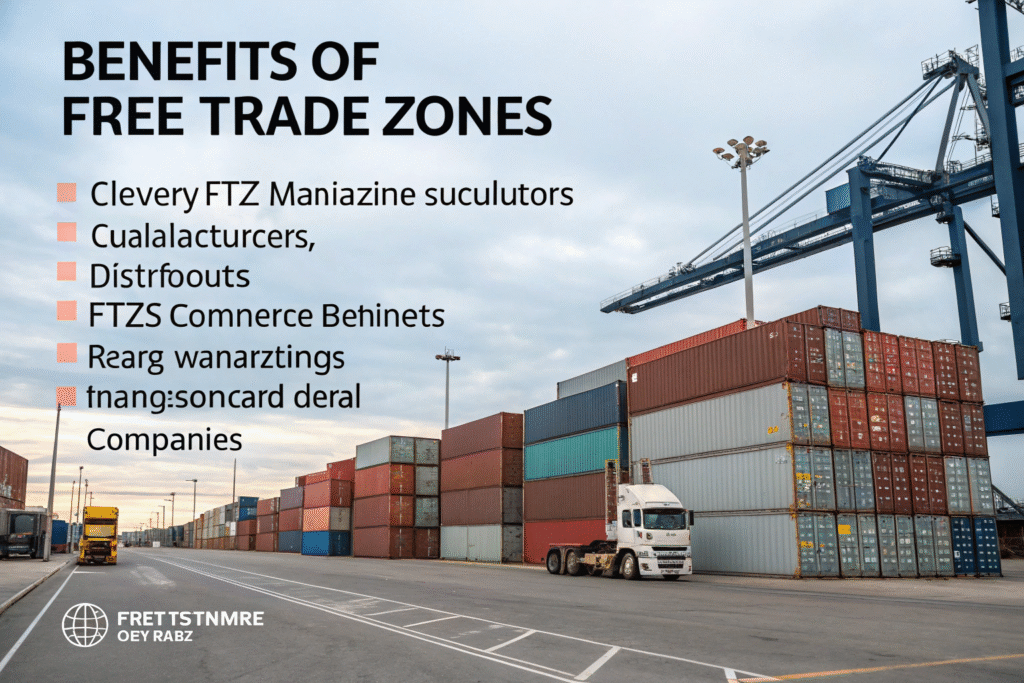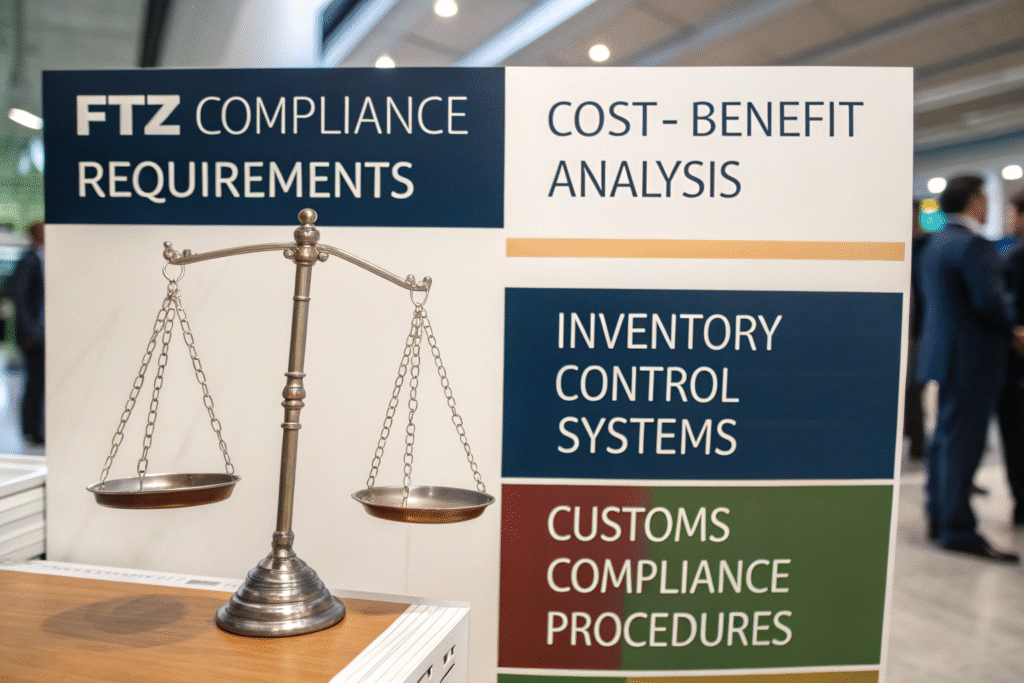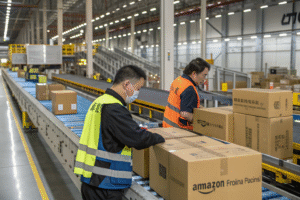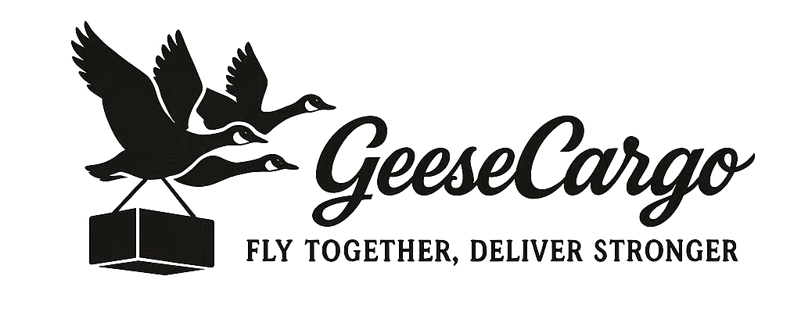When one of our electronics importers started using Foreign Trade Zones (FTZs), they reduced their annual tax liability by $287,000 and improved cash flow by deferring duties until products actually entered the US market. As founder of GeeseCargo, I've seen FTZs transform from obscure regulatory tools into powerful financial strategic assets for savvy importers. The savings go far beyond simple duty deferral.
Using Foreign Trade Zones can save businesses 15-40% on import costs through duty deferral, elimination of duties on re-exports, inverted tariff savings, and streamlined logistics. FTZs act as secure areas within the US that are considered outside customs territory for duty purposes, creating multiple financial advantages while maintaining security compliance.
Foreign Trade Zones represent one of the most underutilized tools in international trade. Understanding how to leverage them strategically can significantly impact your bottom line while providing operational flexibility that traditional import models cannot match.
What Are the Direct Duty and Tax Savings Opportunities?
The most immediate FTZ benefits come from customs duty management strategies that simply aren't available through standard import procedures. These financial advantages apply across virtually all imported goods.

How Does Duty Deferral Improve Cash Flow?
Import duties and taxes aren't paid until goods leave the FTZ and enter US commerce. This creates substantial working capital advantages, particularly for goods with long storage periods or seasonal sales patterns. The deferred duties essentially function as interest-free loans until products are sold.
Weekly entry procedures consolidate multiple shipments into single customs filings. Instead of paying duties as each shipment arrives, companies using FTZs make one weekly payment covering all goods entering commerce that week. This simplification reduces administrative costs while optimizing cash flow.
The deferral period extends indefinitely as long as goods remain in the FTZ. For products with uncertain demand or those awaiting proper documentation, this flexibility prevents unnecessary duty payments on goods that might ultimately be re-exported or destroyed.
What Is the Inverted Tariff Advantage?
When imported components have higher duty rates than finished products, manufacturing in FTZs creates significant savings. Companies can import high-duty components into FTZs, manufacture finished goods with lower duty rates, then pay duties only on the finished product value.
The inverted tariff benefit is particularly valuable for electronics, automotive, and machinery manufacturers. For example, importing individual automotive parts at 4-8% duty rates, then assembling vehicles taxed at 2.5%, creates substantial savings on the value-added manufacturing process.
This advantage also applies to products subject to trade remedies like anti-dumping or countervailing duties. When these apply to components but not finished goods, FTZ manufacturing eliminates these additional costs from the final product.
How Do FTZs Reduce Operational Costs and Improve Efficiency?
Beyond direct duty savings, FTZs offer operational advantages that streamline supply chains and reduce handling expenses. These benefits often exceed the duty savings for many companies.

How Does Streamlined Customs Compliance Reduce Costs?
FTZ operators handle customs compliance centrally, reducing the administrative burden on individual companies. The streamlined procedures eliminate repetitive customs filings for each shipment, saving both time and professional service costs.
Customs examinations typically occur at the FTZ rather than at ports of entry, reducing congestion and demurrage charges. The controlled environment allows for scheduled examinations that minimize disruption to operations compared to random inspections at busy ports.
Simplified record-keeping requirements reduce administrative overhead. FTZ users maintain standardized inventory control systems that satisfy customs requirements without duplicate record-keeping for different government agencies.
What Logistics Efficiencies Do FTZs Provide?
Consolidation and deconsolidation within FTZs optimize container utilization and reduce transportation costs. Companies can break down full container loads for distribution without immediate duty payment, then consolidate exports more efficiently.
Quality control, relabeling, and repackaging activities occur without customs supervision or duty implications. Products can be inspected and prepared for market entry without timing constraints or additional customs procedures.
Just-in-time inventory strategies become more feasible with FTZ storage. Companies maintain buffer stock within the FTZ, entering only what's needed for immediate production or sales. This approach reduces inventory carrying costs while ensuring availability.
What Are the Specific Benefits for Different Business Models?
FTZ advantages vary significantly depending on your industry and business model. Understanding which benefits apply to your specific operation helps maximize your savings potential.

How Do Manufacturers Benefit from FTZs?
Manufacturers using FTZs avoid duties on components that become waste, scrap, or defective during production. Traditional import models pay duties on all imported materials regardless of what ultimately enters commerce. FTZ manufacturers pay duties only on finished products actually entering US markets.
Export manufacturing within FTZs incurs no US duties on components used in products destined for foreign markets. This makes US-based manufacturing more competitive for export products while supporting domestic employment.
Production equipment imported into FTZs for manufacturing operations may qualify for duty-free status until operational. This facilitates capital investment in US manufacturing facilities without upfront duty payments.
What Advantages Do Distributors and E-commerce Companies Gain?
Distributors using FTZs as regional consolidation centers reduce total duty payments through optimized inventory management. By maintaining stock in FTZs and entering only what sells, distributors avoid duties on slow-moving or obsolete inventory.
E-commerce fulfillment from FTZs allows duty payment only when products are actually sold to consumers. This is particularly valuable for businesses with high return rates, as returned goods never incur duties if handled within the FTZ before final entry.
Seasonal businesses benefit from FTZ storage during off-peak periods. Products can be imported during manufacturing cycles that don't align with sales seasons without tying up capital in duty payments.
What Are the Compliance Requirements and Costs?
While FTZs offer significant benefits, they require specific compliance procedures and involve costs that must be weighed against potential savings. Understanding these requirements is essential for successful implementation.

What Security and Inventory Control Systems Are Required?
FTZ operators must implement security measures meeting Customs and Border Protection standards. These typically include fencing, access controls, surveillance systems, and security personnel. The costs vary based on facility size and existing infrastructure.
Inventory control systems must provide real-time tracking of all goods entering, moving within, and leaving the FTZ. These systems must interface with CBP's automated systems and maintain audit trails for customs verification. Implementation costs range from $15,000-$75,000 depending on complexity.
Annual compliance costs include system maintenance, auditing, and customs bond premiums. These typically range from $10,000-$50,000 annually, making FTZs more economical for companies with sufficient import volume to justify the fixed costs.
How Does the Activation Process Work?
Companies must apply for FTZ status through the Foreign-Trade Zones Board, a process taking 6-12 months. The application requires detailed operational descriptions, financial projections, and community impact statements. Many companies use existing FTZ facilities to avoid this lengthy process.
Customs activation follows board approval, requiring implementation of the security and inventory control systems. CBP conducts site inspections before granting operational status. Using third-party FTZ operators eliminates this activation burden.
Ongoing compliance involves weekly entry summaries, annual reports, and periodic audits. While more streamlined than traditional import procedures, these requirements demand dedicated resources or professional management.
Conclusion
Foreign Trade Zones offer sophisticated importers powerful tools for reducing costs, improving cash flow, and increasing operational flexibility. The most successful implementations treat FTZs as strategic assets rather than simple duty-saving mechanisms, integrating them fully into supply chain and financial planning.
At GeeseCargo, we've helped companies achieve first-year FTZ savings ranging from $85,000 for smaller importers to over $2 million for major manufacturers. The key to success lies in thorough analysis of your specific import profile, careful planning of FTZ integration, and professional management of compliance requirements.
Begin your FTZ evaluation by analyzing your annual import volumes, duty rates, inventory turnover patterns, and potential for manufacturing or processing within the US. The savings potential typically becomes significant for companies importing over $5 million annually or paying over $200,000 in annual duties. With proper implementation, FTZs transform from regulatory concepts into substantial competitive advantages.









